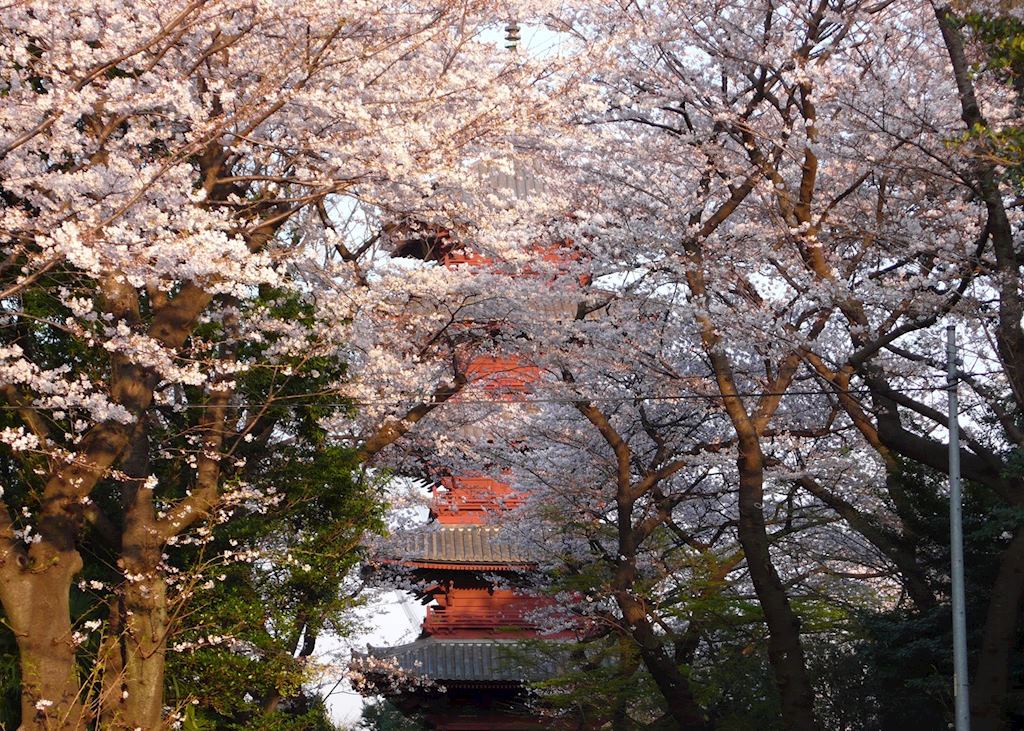Plenty of festivals are held throughout the year in Japan, so it's always worth seeing if you can combine your trip with one. It's a great way of immersing yourself in the culture of the country.
O-shogatsu, Japanese New Year (January)
 O-shogatsu is the biggest festival of the year. Most of the country remains closed until the 3rd January and it's a great time to witness events such as Hatsuhinode (first sunrise of the year) from a snow-capped mountain, or Hatsumode (the first shrine visit). The Japanese are also good at throwing huge Bonenkai (end of year) parties, which is where you are supposed to leave the old year's troubles and worries behind. It's also a good time to enjoy the Japanese alps and snow monkeys.
O-shogatsu is the biggest festival of the year. Most of the country remains closed until the 3rd January and it's a great time to witness events such as Hatsuhinode (first sunrise of the year) from a snow-capped mountain, or Hatsumode (the first shrine visit). The Japanese are also good at throwing huge Bonenkai (end of year) parties, which is where you are supposed to leave the old year's troubles and worries behind. It's also a good time to enjoy the Japanese alps and snow monkeys.
Seijinshiki, Coming of Age ceremony (January)
 The second Monday of January is Seijinshiki. This is a ceremony that takes place all over Japan to celebrate young adults as they turn twenty. It's a great opportunity to see many young people walking around the cities in beautifully prepared Kimonos/Hakamas.
The second Monday of January is Seijinshiki. This is a ceremony that takes place all over Japan to celebrate young adults as they turn twenty. It's a great opportunity to see many young people walking around the cities in beautifully prepared Kimonos/Hakamas.
Sapporo Ice Festival (February)
 Held every February, this is one of Japan's largest winter events. Around two million people come to Sapporo to see the splendid snow statues and ice sculptures which line Odori Park, the grounds at Community Dome Tsudome and the main street in Susukino.
Held every February, this is one of Japan's largest winter events. Around two million people come to Sapporo to see the splendid snow statues and ice sculptures which line Odori Park, the grounds at Community Dome Tsudome and the main street in Susukino.
Setsubun, Welcoming of Spring (March / April)
 Cherry blossom season is celebrated all over Japan, particularly in the grounds of shrines and temples. It's a good opportunity for the Japanese to spend time with friends and family and to hold flower-viewing parties. There is one ceremony in particular, where children/willing adults put masks on their heads, whilst throwing roasted beans everywhere. It's a great way to see the fun side of Japan.
Cherry blossom season is celebrated all over Japan, particularly in the grounds of shrines and temples. It's a good opportunity for the Japanese to spend time with friends and family and to hold flower-viewing parties. There is one ceremony in particular, where children/willing adults put masks on their heads, whilst throwing roasted beans everywhere. It's a great way to see the fun side of Japan.
Obon, A festival to honour the spirit of one's ancestor (August)
 Obon takes place throughout the entirety of August and Japanese people living abroad have a tendency to fly back to Japan just to spend time with family. One of the main reasons people visit during this time of year however is Mount Fuji. August is one of the only months where it is possible to reach the summit.
Obon takes place throughout the entirety of August and Japanese people living abroad have a tendency to fly back to Japan just to spend time with family. One of the main reasons people visit during this time of year however is Mount Fuji. August is one of the only months where it is possible to reach the summit.
Tanabata, the Star Festival (July / August)
 This is an extremely colourful festival held on various days in July and August. The whole of Japan is decorated with lanterns which are supposed to resemble shooting stars, with one of the biggest festivals taking place in Sendai. Meaning 'Evening of the Seventh', the festival celebrates the meeting of the deities Orihime and Hikoboshi.
This is an extremely colourful festival held on various days in July and August. The whole of Japan is decorated with lanterns which are supposed to resemble shooting stars, with one of the biggest festivals taking place in Sendai. Meaning 'Evening of the Seventh', the festival celebrates the meeting of the deities Orihime and Hikoboshi.
Shichi-go-san (7-5-3) Festival (October / November)
 The autumn colours are beautiful at this time of year, particularly the Japanese maples. It's also the Shichi-go-san Festival which marks the traditional rite of passage for children of these ages, held annually on 15th November to celebrate their growth and well-being. It is not uncommon for them to visit Shinto shrines, whilst dressed up in kimonos, often for the first time.
The autumn colours are beautiful at this time of year, particularly the Japanese maples. It's also the Shichi-go-san Festival which marks the traditional rite of passage for children of these ages, held annually on 15th November to celebrate their growth and well-being. It is not uncommon for them to visit Shinto shrines, whilst dressed up in kimonos, often for the first time.
Was this useful?





